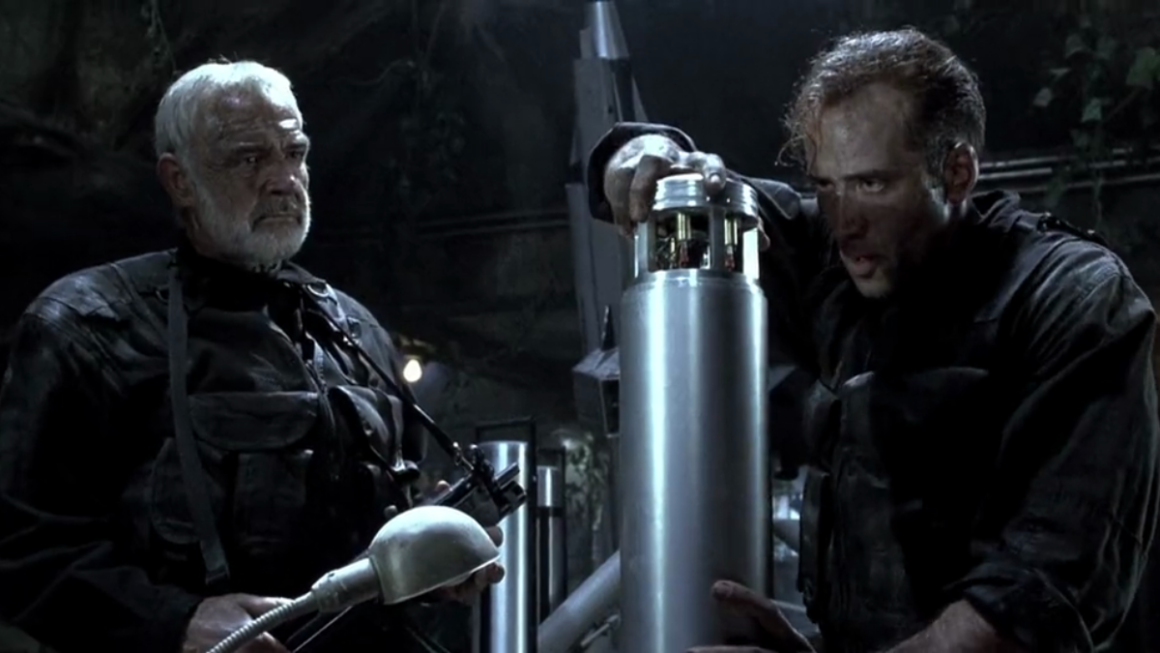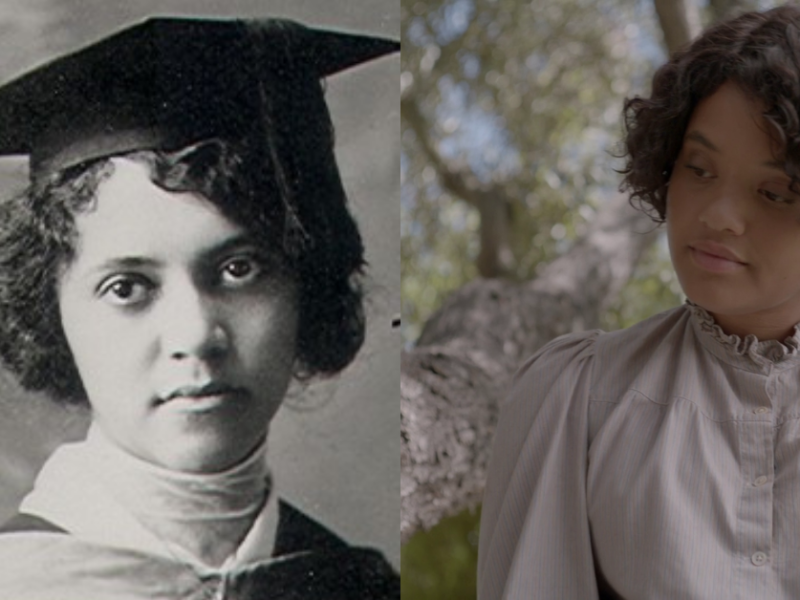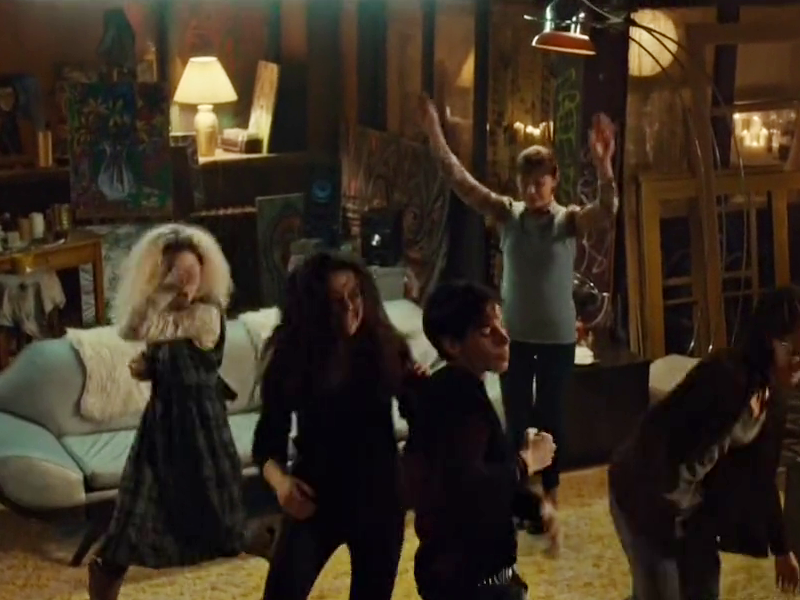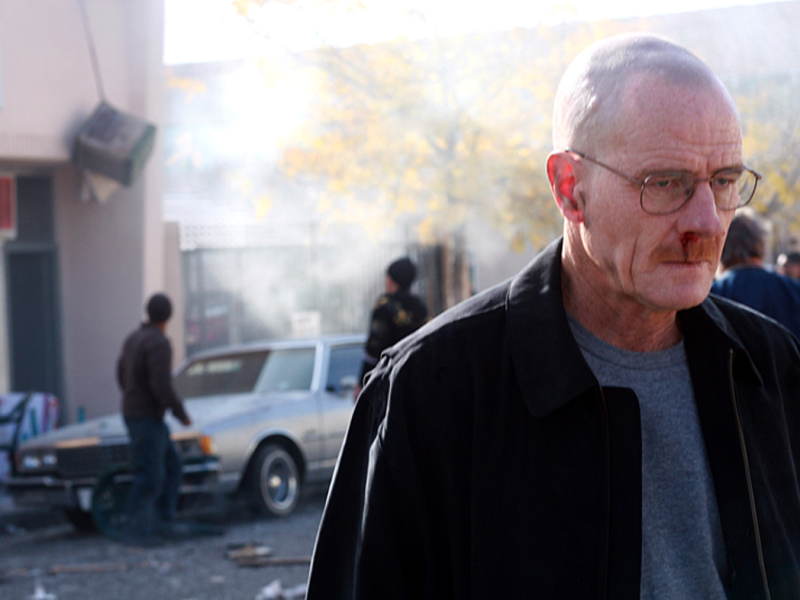On February 13, 2017, Kim Jong-nam, the half-brother of North Korean leader Kim Jong-un, was murdered at a Kuala Lumpur airport with VX nerve agent, a particularly terrible chemical weapon. In an assassination plot that is stranger than fiction, the deadly chemical agent was delivered as a binary compound. Two women, allegedly believing they were part of a prank reality show, smeared two chemicals, one after the other, on Kim’s face. These two chemicals reacted to create the lethal dose that killed Kim.
VX appears in several TV shows and movies from Spooks, The Eleventh Hour, and It’s a Disaster but the best-known example is the 1996 film The Rock. The movie centers on a planned terrorist attack from the island Alcatraz off the coast of San Francisco. To stop the rogue general Frank Hummel (Ed Harris), the FBI enlists the help of chemical super-nerd Stanley Goodspeed (Nicolas Cage), and federal prisoner and former SAS operative John Mason (SeanConnery).
While the movie takes some artistic license with this deadly compound, it gets much of the science correct. So, how well did the movie get the science right? And, is the compound used to kill Kim Jong-nam as deadly as the show makes it out to be?
What Is VX Nerve Agent Anyway?
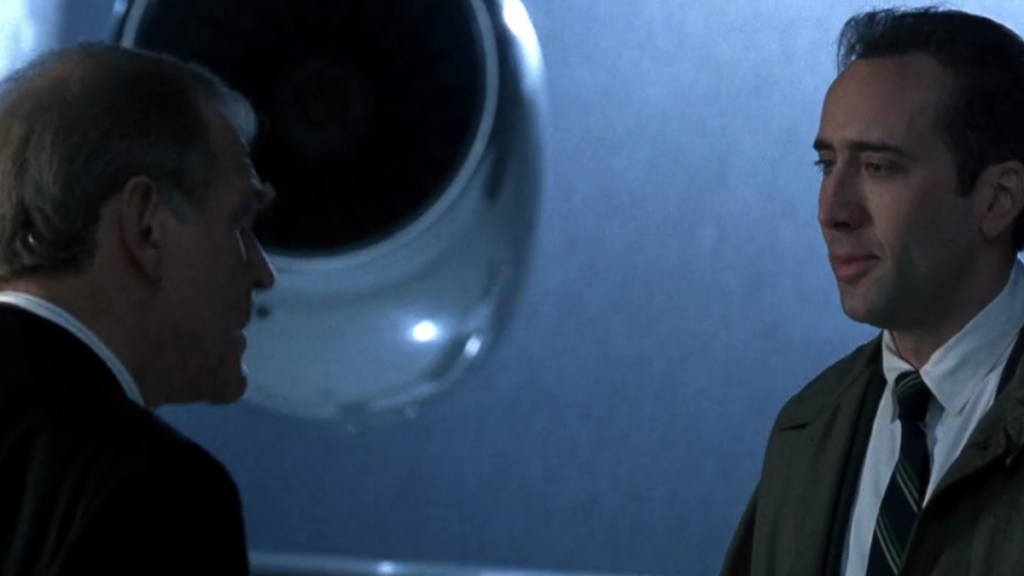
VX is not a gas, as depicted in the show, but a thick, heavy oil that is tasteless and odorless, with the consistency of honey. As Sam Goodspeed said in the movie, “It's one of those things we wish we could disinvent,” and he is not that far from the truth. As Goodspeed describes, VX was a failed pesticide, and it is here where the story becomes interesting.
The chemical was discovered in 1952 while two scientists — Ranajit Ghosh La-a and J. F. Newman — were doing pesticide research. The two chemists realized the chemical was so toxic that the company they worked for, Imperial Chemical Industries, ceased research in 1955; there was no way to safely handle the pesticide for agricultural use.
| Code Name | Chemical Name |
| VX | O-ethyl-S-[2-(diisopropylamino)ethyl] methylphosphonothioate |
| VE | O-ethyl-S-[2-(diethylamino)ethyl] ethylphosphonothiolate |
| VG | O,O-diethyl-S-[2-(diethylamino)ethyl] phosphorothioate |
| VM | O-ethyl-S-[2-(diethylamino)ethyl] methylphosphonothioate |
What Ghosh and Newman discovered was the first in the V-series of nerve agents, a toxin that would eventually be called VG. VG is about one-tenth as toxic as VX, which is similar to sarin (another chemical seen in the movie). Samples of Ghosh and Newman’s nerve agent was eventually sent to the British military science park "Porton Down" where they developed the series of nerve agents called the V-series. The V is a contraction of the words: venomous agent.
Is VX as Bad as the Movie makes It?
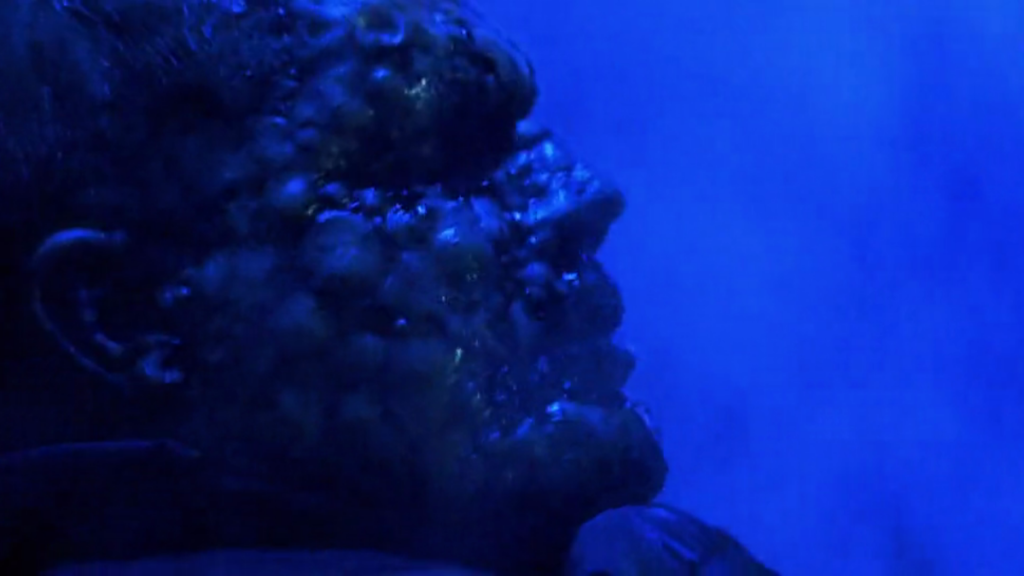
The movie takes some artistic liberties, but the short answer is yes. While it will not melt your face or cause boils to erupt all over your body, something far worse happens — the victim suffocates to death. The nervous system is an electrochemical network. Electrical signals propagate along the neural wiring but they are not all connected to each other. Instead, they are separated by gaps or synapses.

As electrical signals cannot propagate across this gap, special chemicals called neurotransmitters are needed. They traverse the gaps, or synapses, that exist between two neurons or a neuron and an effector cell. Effector cells respond to a stimulus and effects some change. One neurotransmitter, acetylcholine, binds to receptors on the outside of muscle fibers and initiates a contraction.
Once the acetylcholine has done its job, an enzyme called acetylcholinesterase breaks the molecule into choline and acetate. This enzyme is abundantly available to clear away free acetylcholine. When the chemical signal is removed, muscle cells relax. VX and other neurotoxins work by chemically binding to acetylcholinesterase, inhibiting the enzyme. Thus, victims asphyxiate, unable to draw breath as their muscles remain continually contracted.
And it gets worse. This chemical is ridiculously toxic. Not only does a little go a long way, it also persists in the body for long periods. According to the National Academies of Sciences, a lethal dose can be as low as 0.04 milligrams per kilogram of bodyweight. It will take at least 2.7 milligrams — just a speck — placed on exposed skin to kill a person weighing 68 kilograms (150 lbs). One drop, about 10 milligrams, is believed to be the lethal dose for most people.
The Heart Stab
As horrible as the prospect of coming into contact with VX, or any nerve agent for that matter, all is not lost. In the movie, Goodspeed and the SEAL team are given atropine to inject into their hearts should they be exposed to VX. This drug is found in plants of the nightshade family: deadly nightshade, Jimson weed and mandrake.
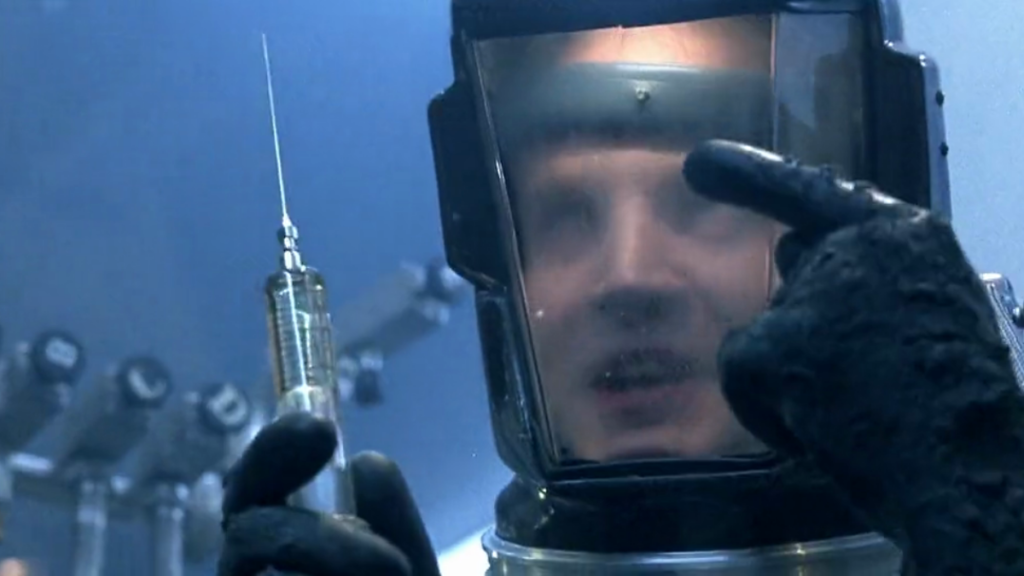
Atropine is technically not an antidote for nerve gas poisoning. The drug is often used to treat bradycardia (slow heart rate), and to decrease saliva production during surgery. The chemical blocks acetylcholine from binding with receptors, which means that it can also be used as a treatment for nerve gas exposure.
Troops are given auto-injectors filled with the drug, allowing the drug to be rapidly injected into the thigh if they are likely to be attacked with chemical weapons. So, there is no need to drive what looks like a stake through your heart. If only someone in the FBI had told that to Marvin Isherwood (Todd Louiso).
Kim Jong-nam’s Assassination
This brings us back to Kim. VX is both dangerous to store and handle; one minor mishap can kill everyone nearby, something at least two members of Gen. Hummel’s USMC Force Recon team know. In the movie, the VX is stored in, as Goodspeed describes, “a really elegant string-of-pearls configuration.” As if things were not bad enough, Goodspeed says this configuration is incredibly unstable, which has led to a few accidents.
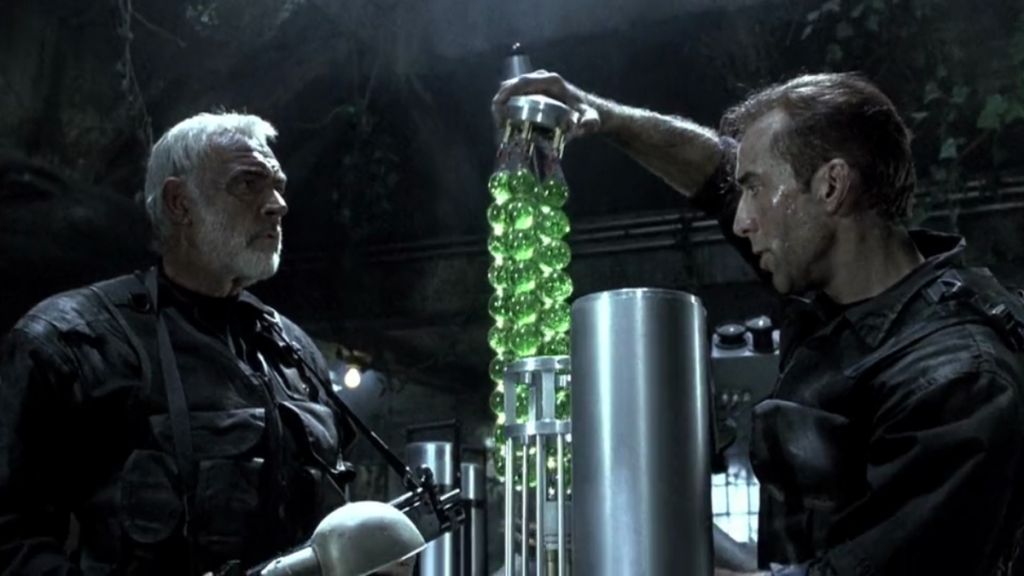
Given the danger, this means that Kim’s assassins likely were not handling VX directly according to Raymond Zilinskas, Director of the Chemical & Biological Weapons Nonproliferation Program, in a Vox interview. He suggests that the fumes would have killed them even if they were wearing gloves. A more likely scenario is the use of a binary chemical.
A similar idea was seen in the tenth and eleventh episodes of Dexter's sixth season — Ricochet Rabbit and Talk to the Hand. Travis Marshall (Colin Hanks) a.k.a. “The Doomsday Killer” prepares a binary weapon by filling two containers, one with methylphosphonyl difluoride (DF) and the other with isopropyl alcohol. These chemicals react to form sarin.
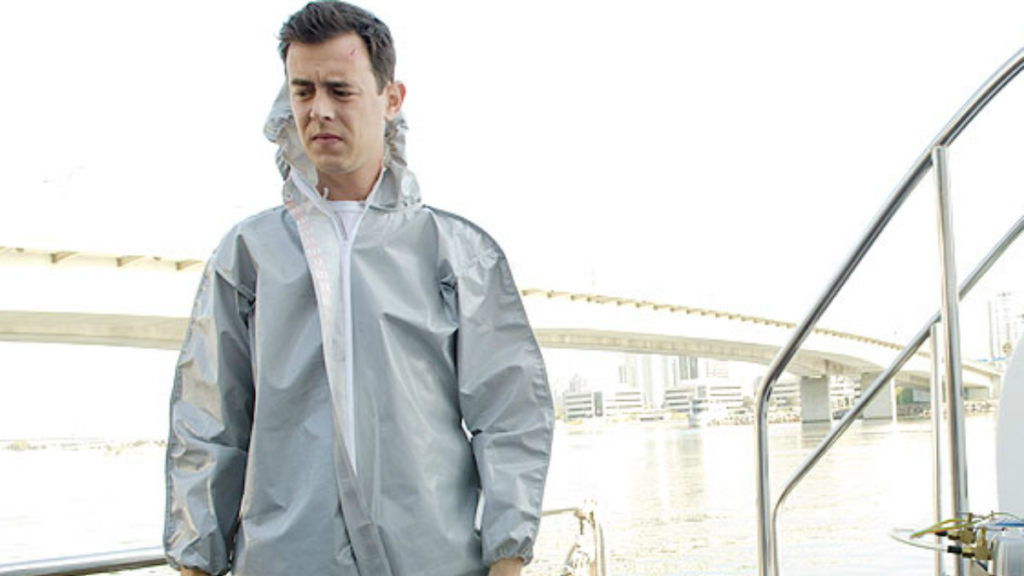
The military has experimented with binary chemical weapons in an attempt to make the devices easy to store and handle. The Bigeye aerial chemical bomb has a stainless steel cylinder filled with elemental sulfur. Just before detonation, an electric motor cuts a hole into the cylinder so the sulfur mixes and reacts with the chemical agent QL to form the VX nerve agent.
VX may also be produced by mixing agent QL with a liquid sulfur compound, like dimethyl polysulfide (agent NM). This was used in the canceled XM-768 binary projectile program. It is possible that the two women used these two chemicals to assassinate Kim.
The Science of The Rock
A lot has changed since the movie came out in 1996. For one, the United States no longer has any VX chemical weapons. The Chemical Weapons Convention, signed in 1993, banned the production, stockpiling and use of chemical weapons and their precursors. The United States began stockpile elimination in 2005, which was completed in March 2012.
However, this does not mean that the world has been rid of chemical weapons. Many countries still have precursor chemicals lying around, like Agent QL, that can be used to make VX. It is the goal of organizations like the Organization for the Prohibition of Chemical Weapons to not only destroy the world’s remaining stockpiles of chemical weapons but all of the precursors.
The science in the movie is surprisingly accurate even though it takes some artistic license in dramatizing the effects of VX. Hopefully, the world will achieve its goal to eliminate these terrible weapons. We can look back on movies like The Rock and wonder why they ever existed in the first place and take comfort that the plot behind this classic will never be remade or rebooted.
Also published on Medium.

